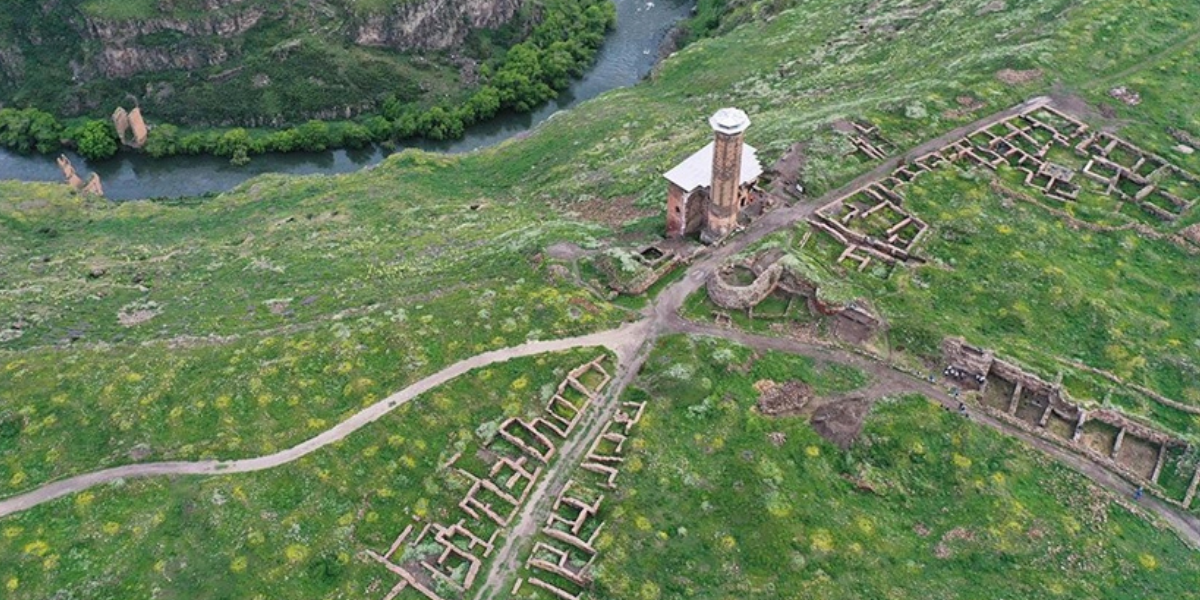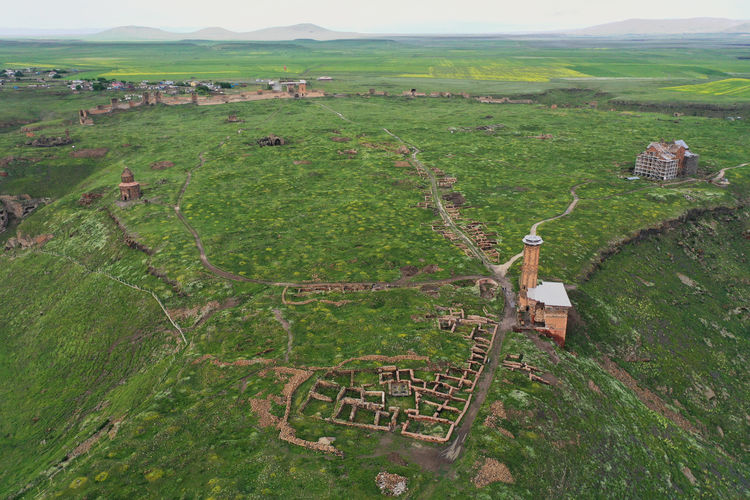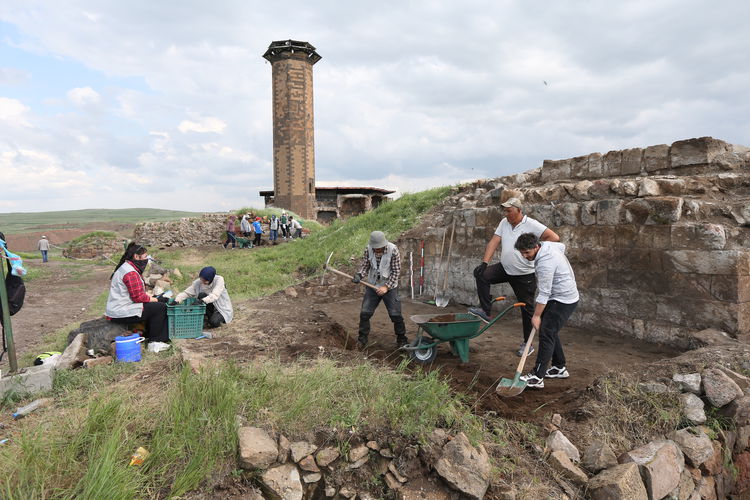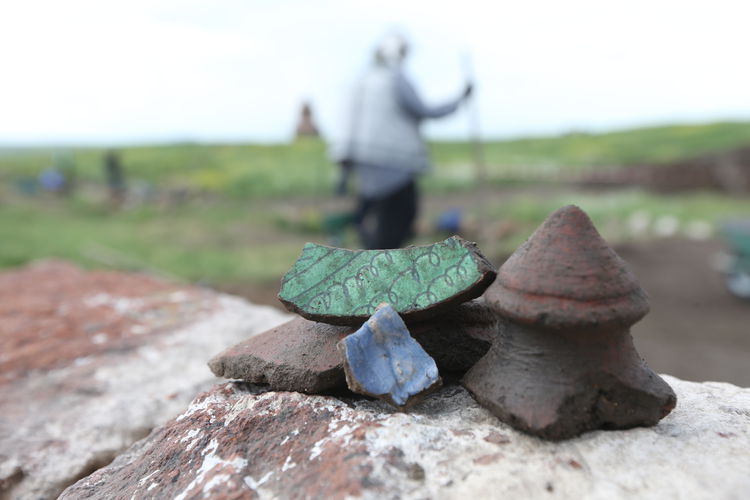
Excavation season begins in the ancient ghost city of Ani Ruins
A new season of excavations has begun in the ancient ghost town of Ani Ruins, located on the banks of the Arpaçay River in the eastern Turkish province of Kars, where Christians and Muslims lived together in the past.
Also known as the “City of 1001 Churches” in the 10th century, Ani served as the capital of the Bagratid Kingdom in the 11th century.
In the prehistoric period, the settlement in the ruins is seen in the volcanic caves in the valley known as Bostanlar Creek.
The settlement within the city walls started in the 4th century AD in the Inner Castle. The Inner Fortress, which forms today’s ruins, was built by the Karsakians, who gave their name to the city of Kars.

In the 11th century, more than 100,000 people lived in Ani, which was included in the UNESCO World Heritage List in 2016.
Ani, an important trade center on the Silk Road, was destroyed by the Mongols in the 13th century.
This season, excavations at the Ani archaeological site, which has an area of approximately 100 hectares, started at 8 points with a team of art historians, archaeologists, architects and students.
Kafkas University faculty member Assoc. Prof. Dr. Muhammet Arslan told AA correspondent that they started the 2024 season of excavation and conservation works in Ani in June.

Stating that they started working at 8 different points in order to unearth the historical structures and artifacts underground in Ani, Arslan said, “We continue our work with an interdisciplinary team from 10 different universities, including art historians, archaeologists, architects and restorers. We are working at 8 different points. In addition to our ongoing work in the Seljuk bazaar, residences, cemetery and the great bathhouse from last year, we have intensified our work in the area we call the western Ashot walls and at the Divin gate.”
Stating that Ani Ruins was one of the most important cities of the Middle Ages, Arslan said that Ani entered a period of rise with the conquest of Sultan Alparslan and reached a population of 100 thousand.

Explaining that Ani entered a period of decline with the Georgians and that there are architectural remains of 3 civilizations in Ani, both above ground and underground, which are still waiting to be excavated, Arslan said, “Our aim here is to bring the architectural remains to light, protect them and pass them on to future generations. The small movable finds that we obtained during our excavations are also cleaned and restored by our team at the excavation house and delivered to the Kars Museum to be inventoried and exhibited.”
Cover Photo: Cüneyt Çelik/AA
You may also like
- A 1700-year-old statue of Pan unearthed during the excavations at Polyeuktos in İstanbul
- The granary was found in the ancient city of Sebaste, founded by the first Roman emperor Augustus
- Donalar Kale Kapı Rock Tomb or Donalar Rock Tomb
- Theater emerges as works continue in ancient city of Perinthos
- Urartian King Argishti’s bronze shield revealed the name of an unknown country
- The religious center of Lycia, the ancient city of Letoon
- Who were the Luwians?
- A new study brings a fresh perspective on the Anatolian origin of the Indo-European languages
- Perhaps the oldest thermal treatment center in the world, which has been in continuous use for 2000 years -Basilica Therma Roman Bath or King’s Daughter-
- The largest synagogue of the ancient world, located in the ancient city of Sardis, is being restored











Leave a Reply